PUERTO MORELOS,“The Jewel of The Caribbean”.
Part 3.
THE PUEBLO
One does not read about the Pueblo at Puerto Morelos in the guidebooks — it is totally overlooked. This is where local families live: it is Mexico undiluted with tourists. Most people living here are employed locally: in construction, in the hospitality industry or as housekeepers, laborers or gardeners. The cost of living is much less here, from housing to food and everything in between. On the outskirts of the Pueblo, the developers are beginning to build attractive modern condos — but even these are also inhabited by the local population, those that can afford them.
The Pueblo is on the western side of Highway 307, where there are an interchange and a bus station. It’s a place where people driving up and down the freeway can take a break, fill up their car with gas at one of the new gas stations, get something to eat or stop at the supermarket on their way home.
Maybe after Part 1, you may have felt I was fixated on Chedrui Supermarket…….it’s because I am. Just as we are a reflection of the company we keep, Chedrui is a reflection of the demographic that lives around it: the local population of the Pueblo. In appearance, this Chedrui was more like an untidy Walmart and more “humble” than the Super Chedrui, where the snowbirds vacationed and shopped. It is the local supermarket.
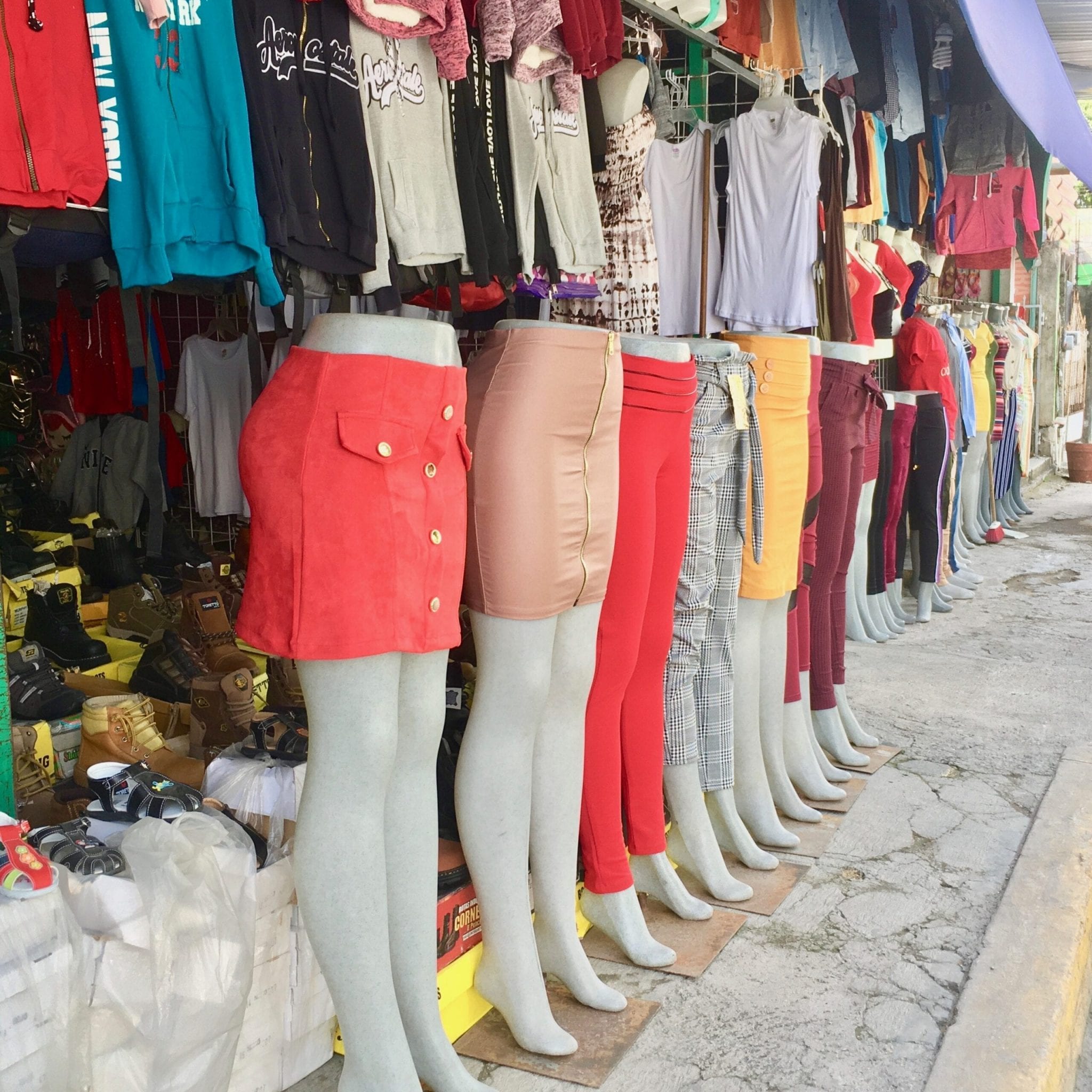
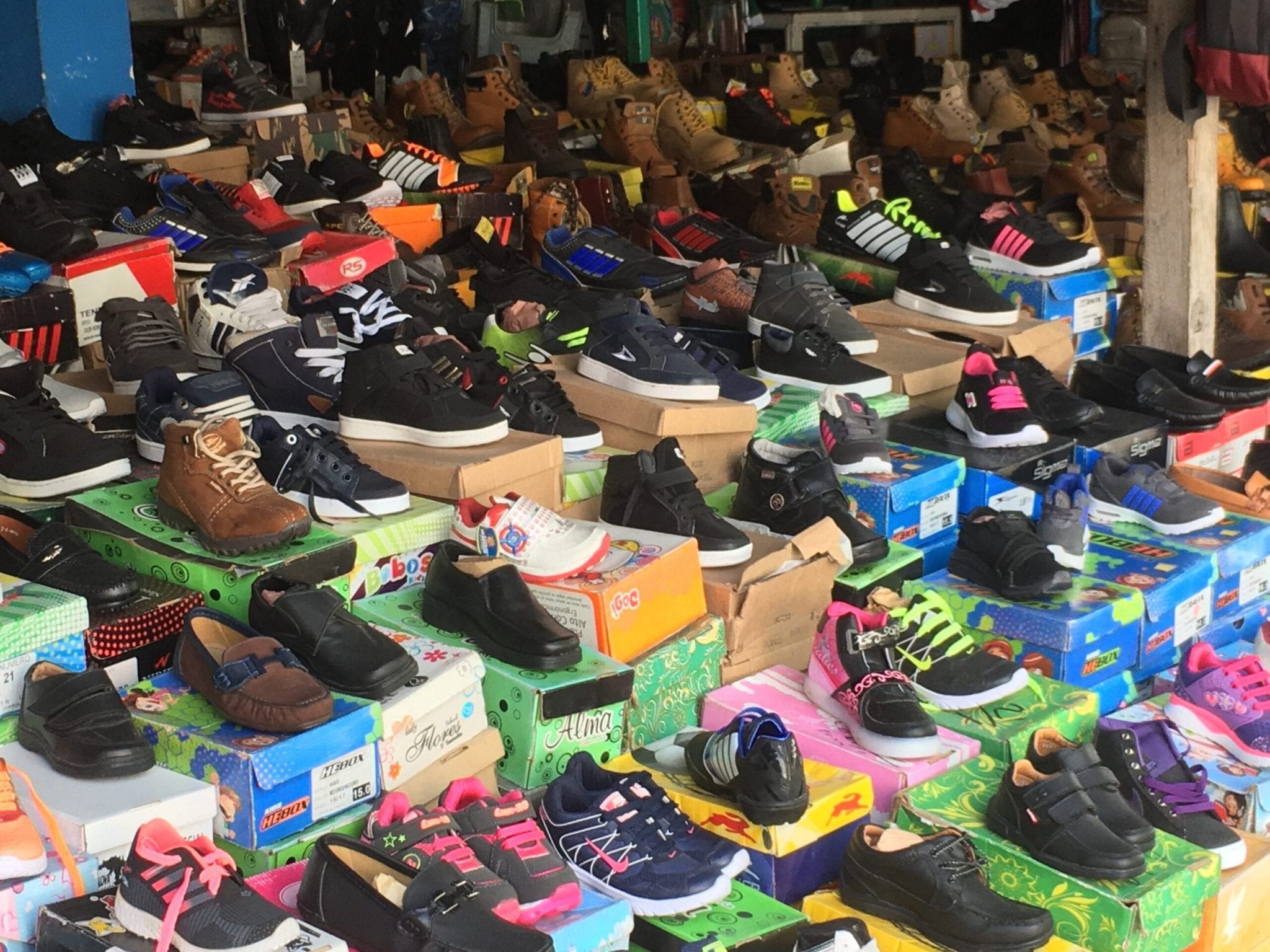
I visited on a Saturday morning and the Pueblo was buzzing with lots of street life, music blaring. The shops were just opening, having perfected their displays of merchandise — and looking at the displays, it seemed “more is better” in Pueblo marketing.
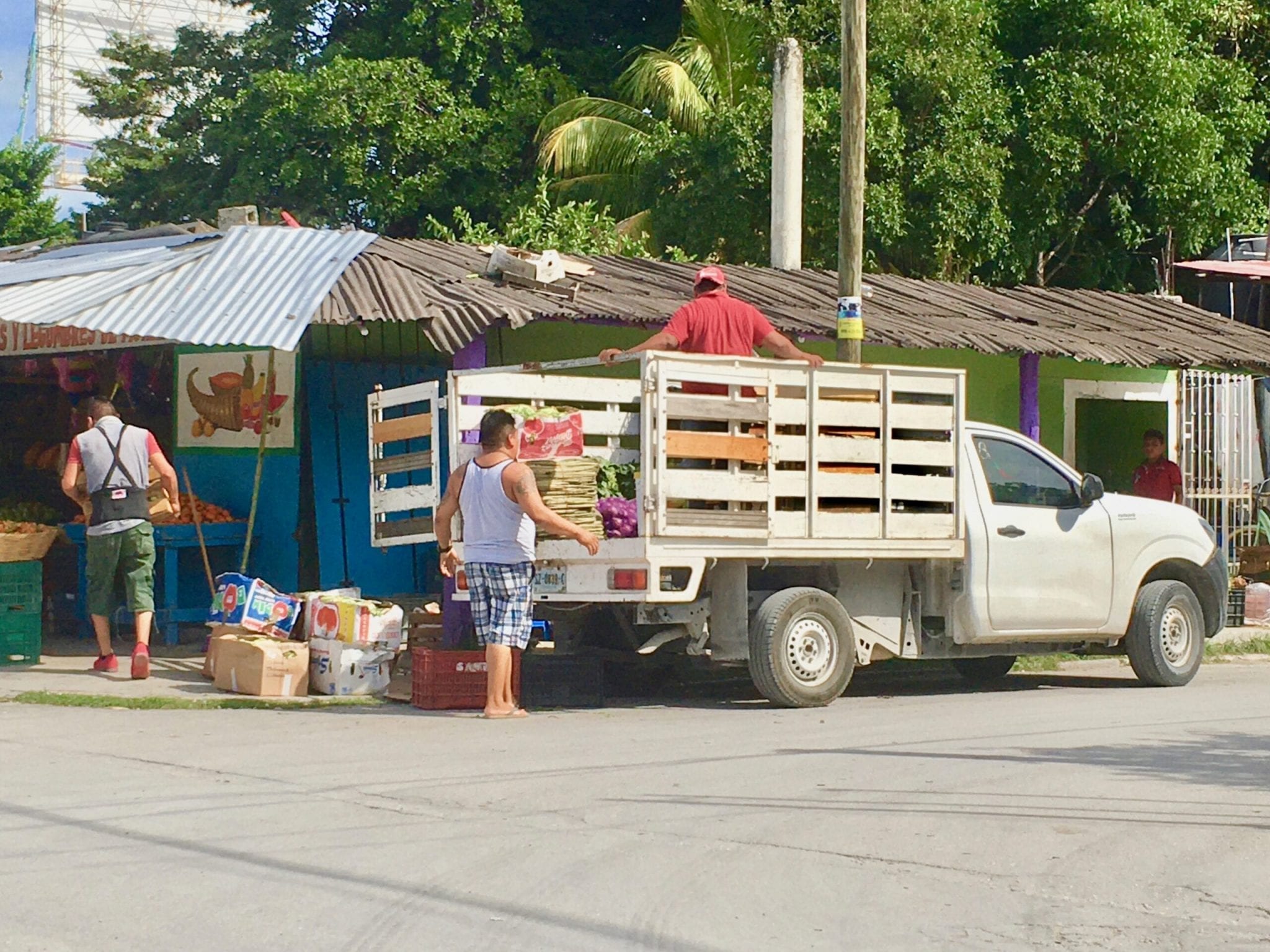
Trucks were unloading fresh fruit and vegetables onto makeshift stalls.

And “pop-up” Street Stalls were appearing, hoping for a good day of trading.
The open-air restaurants, which had palapa roofs for shade and custom-made rustic tables and benches, were not yet open.

As the day wore on, they would become more active … reaching their busiest at night, helped by a few cervezas.
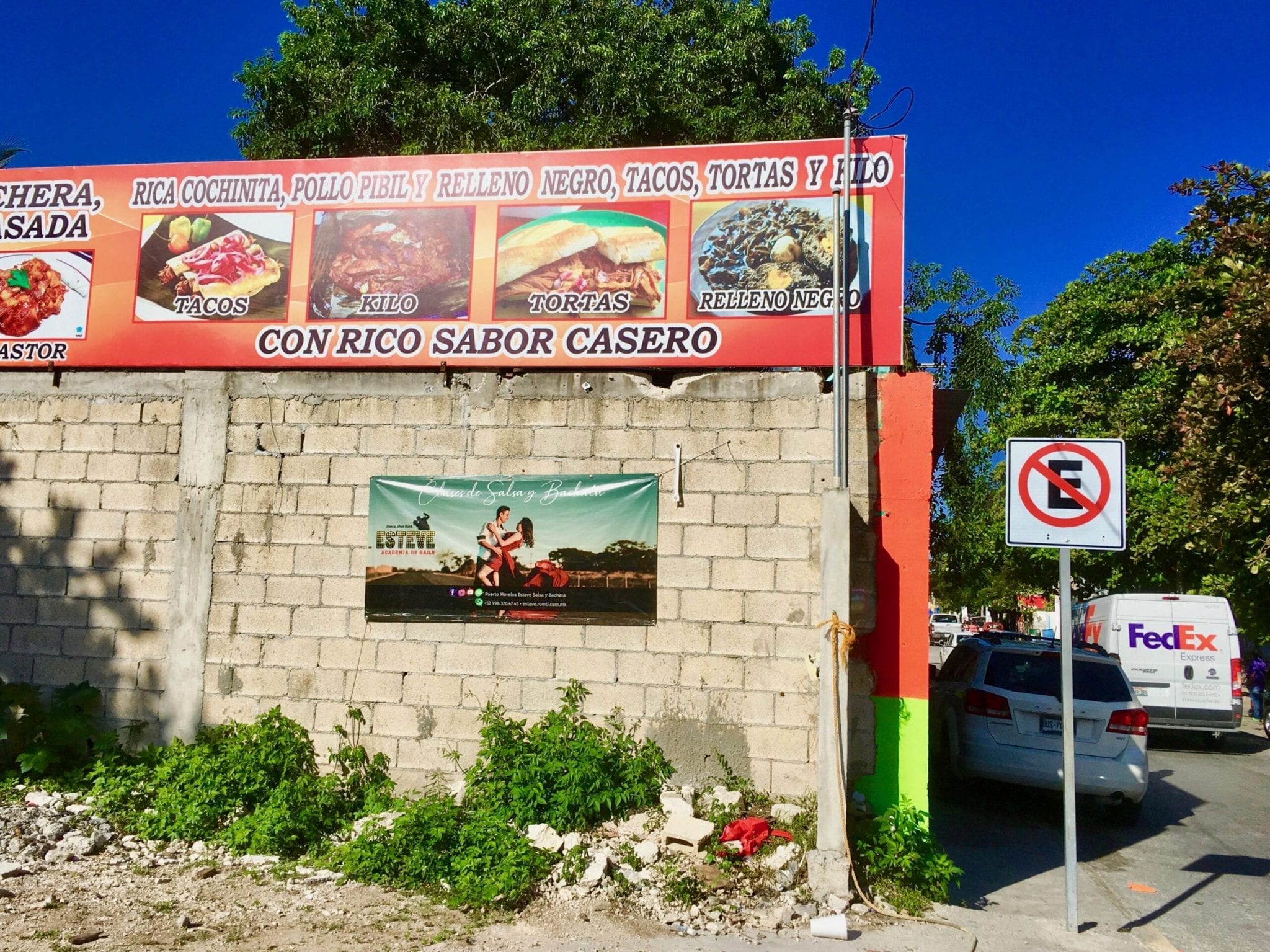
The food served here is authentic and homecooked — and even though the recipes are similar, it costs less here than it would in the old town where the tourists are eating.
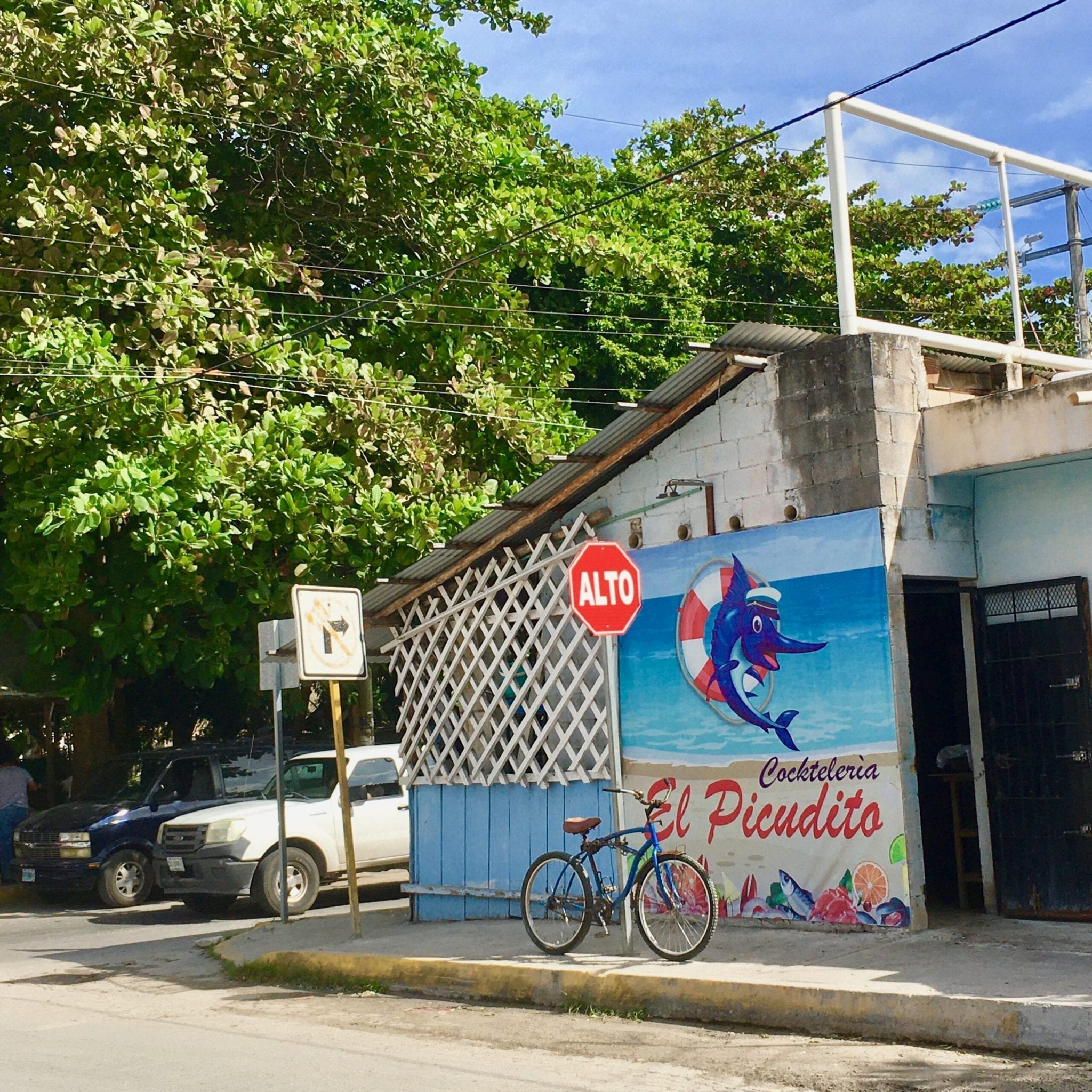
There is a lot of variety, and fresh fish from the Caribbean ocean is always front and center.
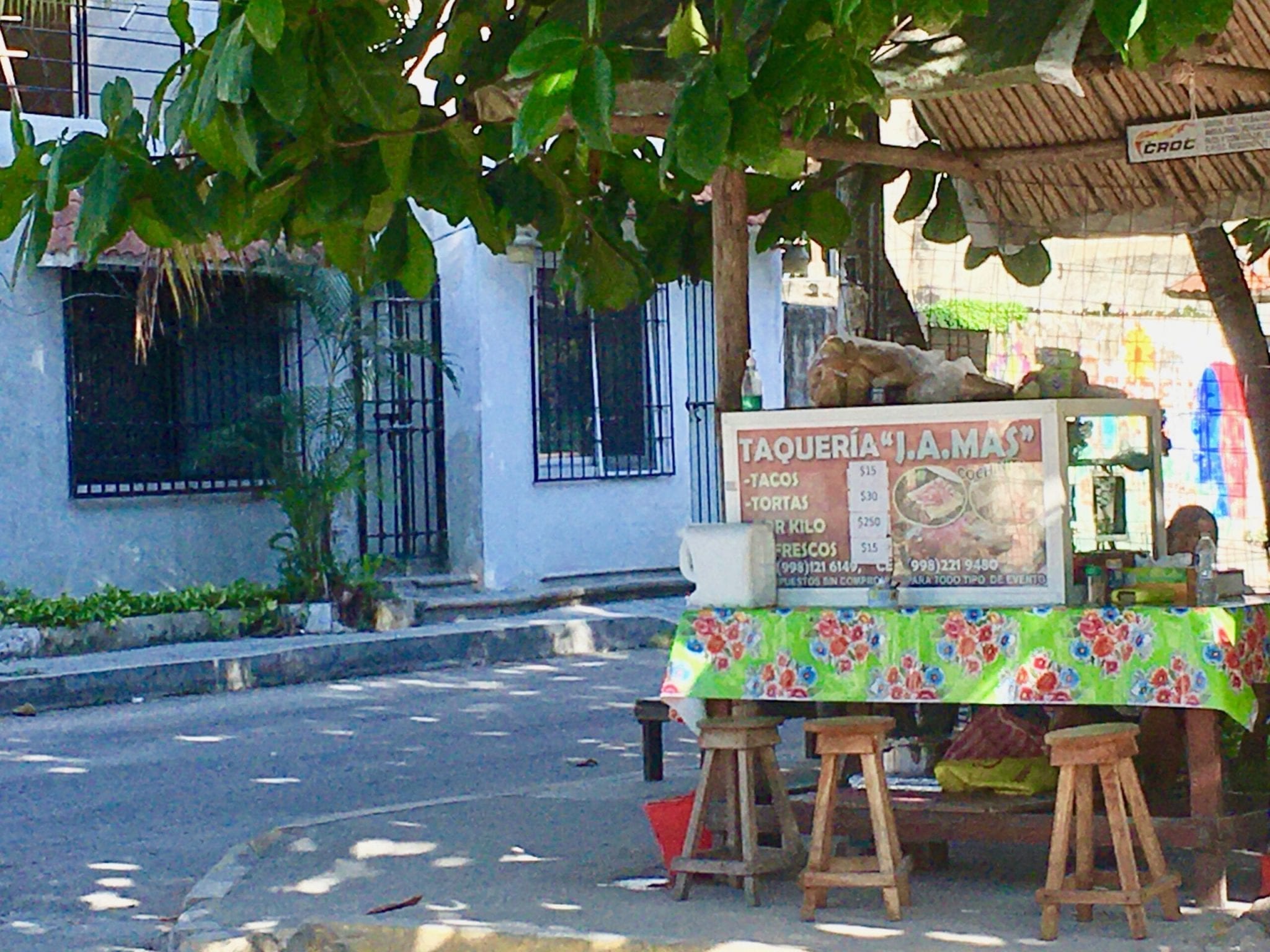
On the main street, temporary food stalls were being set up, shaded by the dense, fleshy green leaves of the overhanging ficus trees which are huge and have been here for more than one hundred years. Sometimes, a store is a makeshift table, covered with a plastic table cloth and simple signage displayed to attract customers for a drink and a snack. No need for building permits.
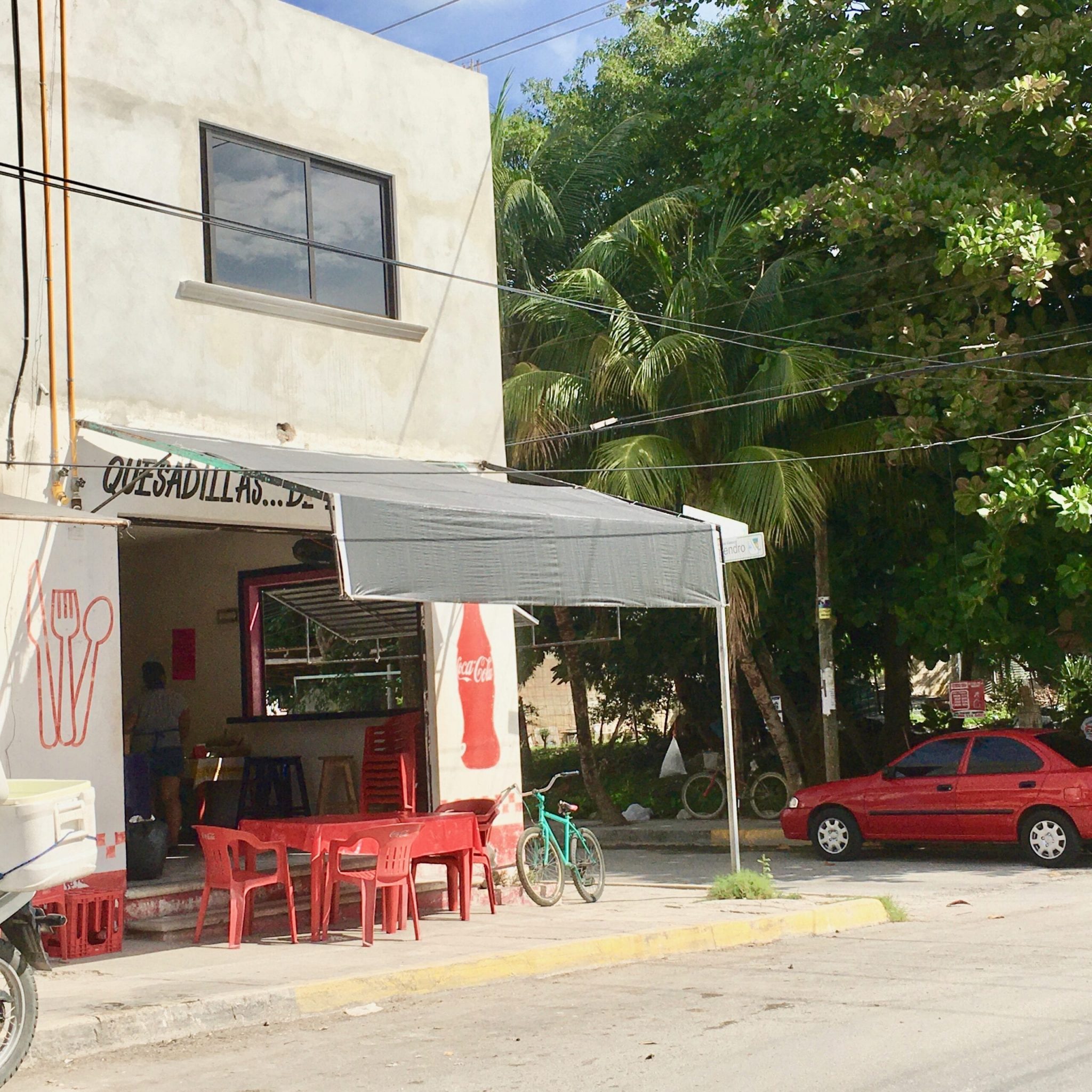
Tacos and quesadillas were being prepared, served both indoors and outside on the sidewalk in the fresh air.
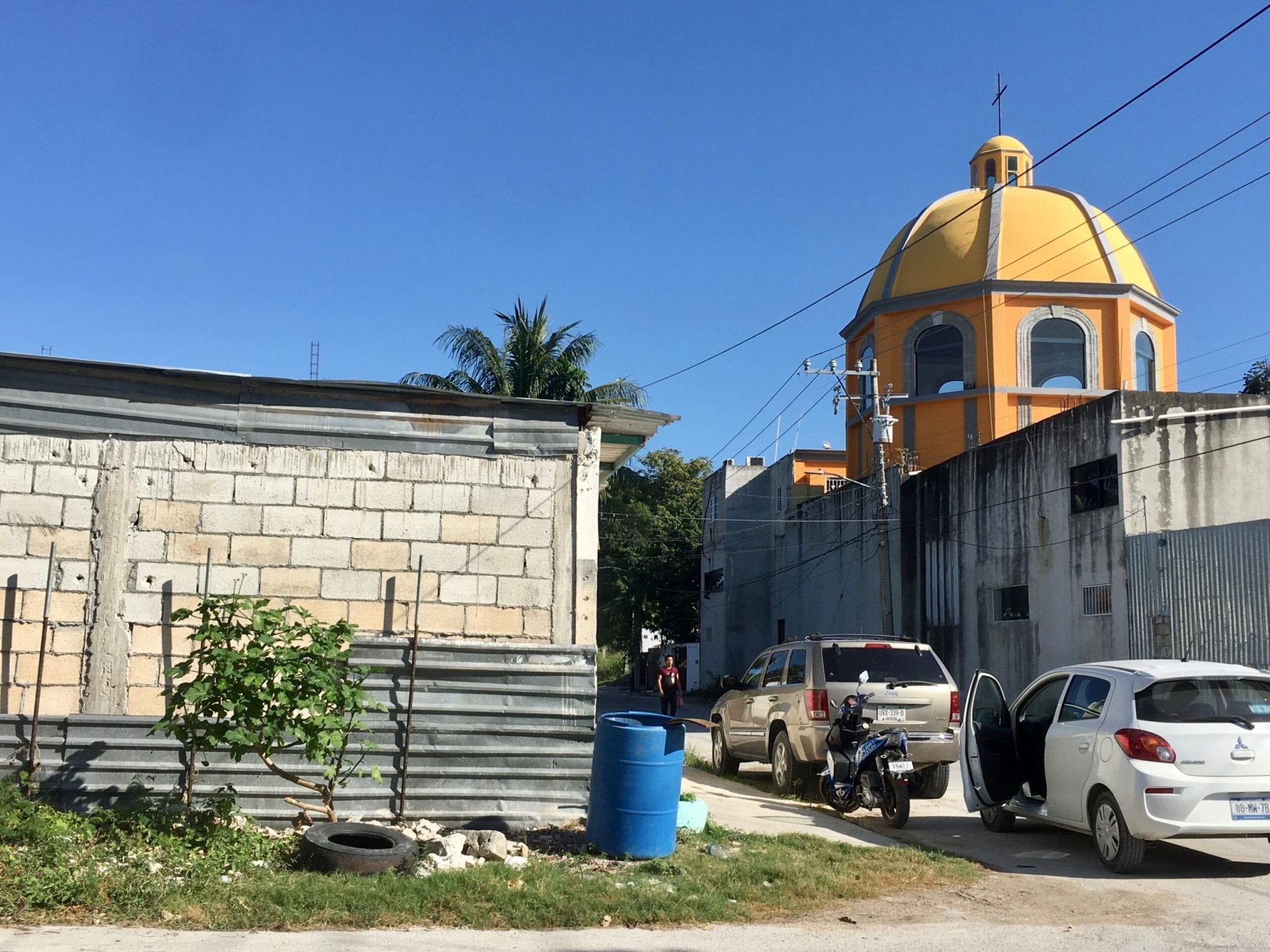
The church was central to the town and looked more weather-beaten than the one in the fishing village.
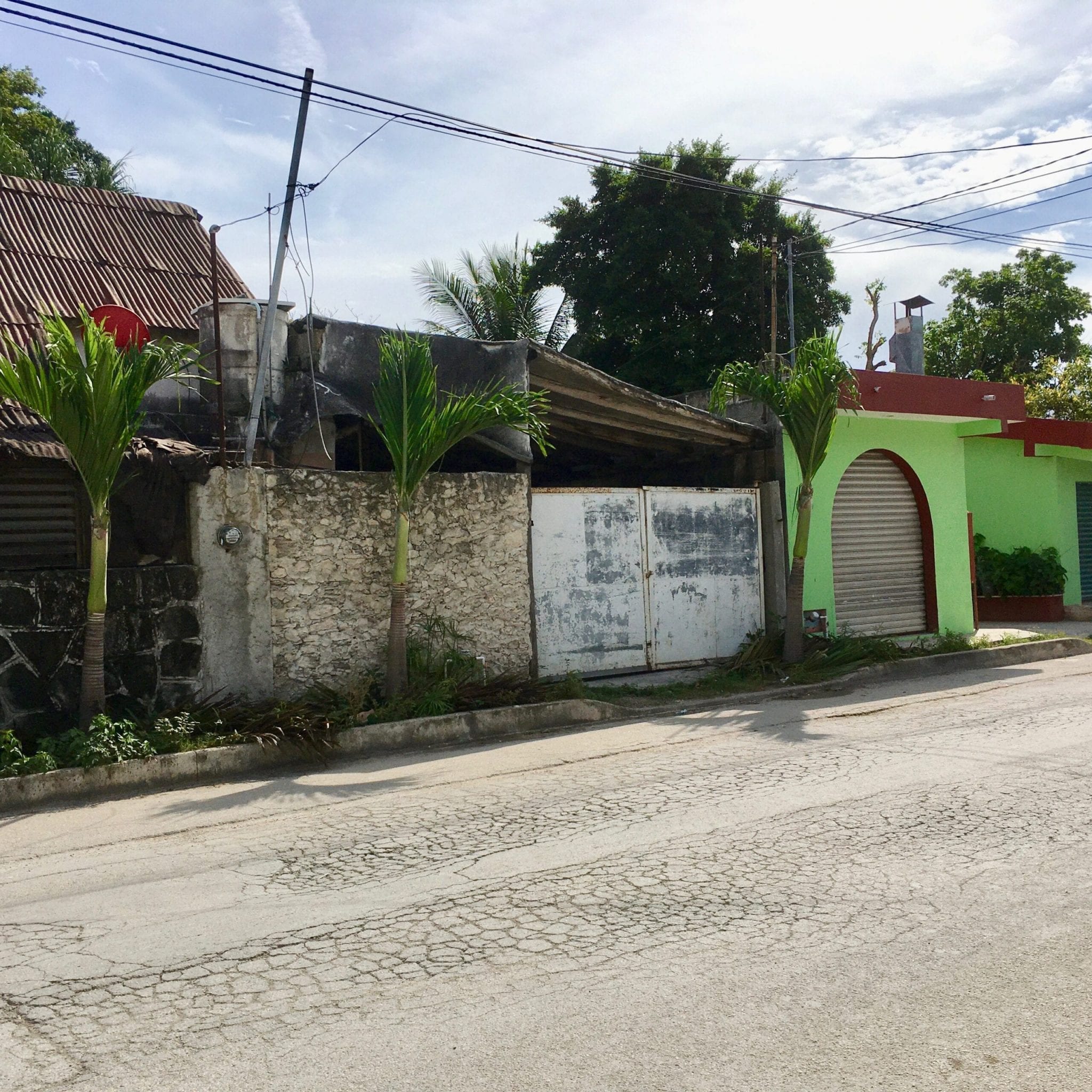
I was surprised to see how much construction there was in the Pueblo — the existing buildings were well maintained and freshly painted.
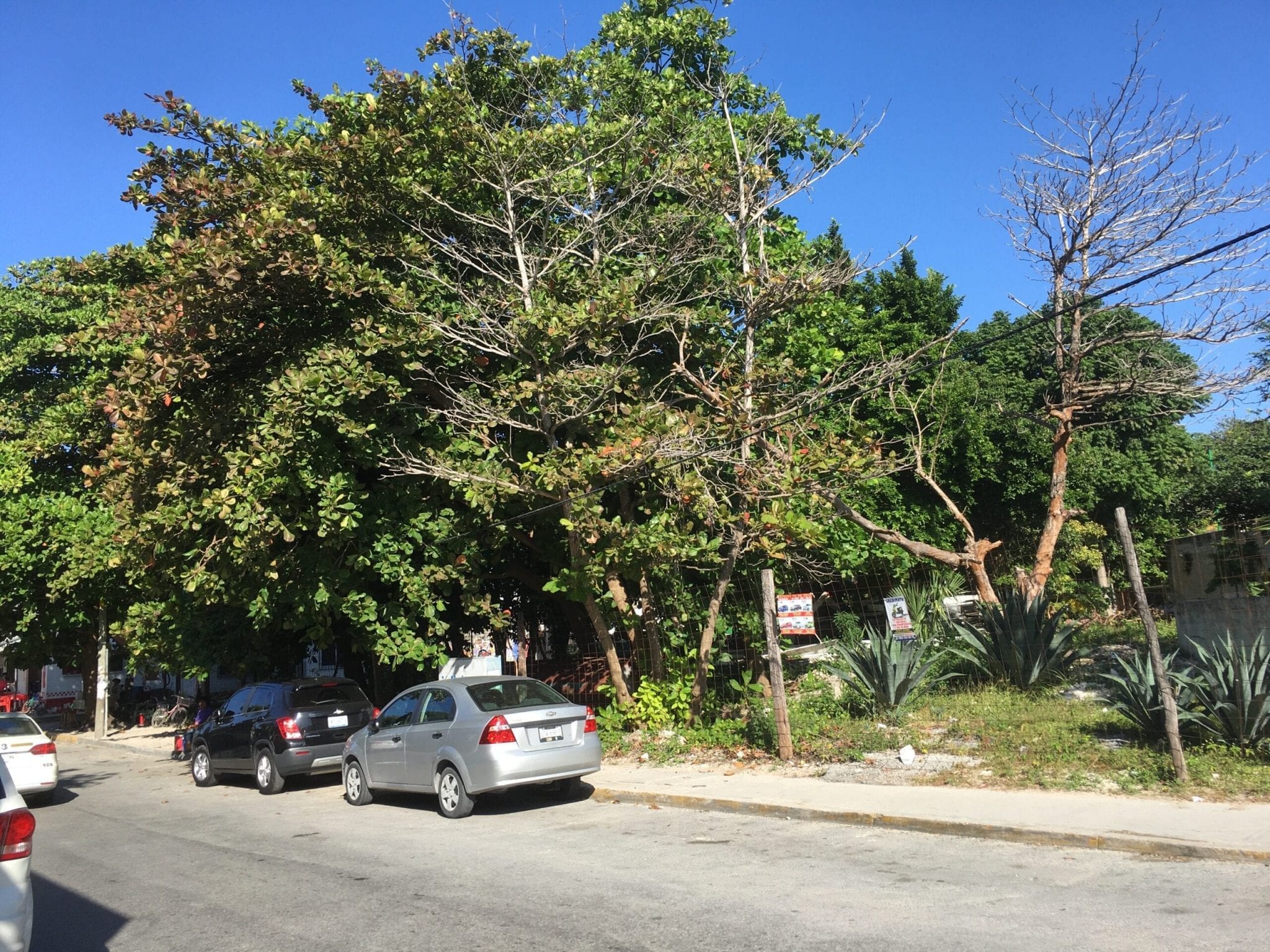
Most of the houses were in good condition and any cars that I saw were more recent models and not jalopies. It was my observation that the economy is trending upwards and the middle class is also on the up-and-up in the province of Quintana Roo. This is a reflection of how the growth of tourism has created jobs, generated wages and a higher demand for goods.
CONCLUSION
Puerto Morelos is made up of thee distinctive neighborhoods: the Old fishing Port, the newer housing developments where I “mistakenly” stayed and the Pueblo. Together, they are home to 10,000 people who live here and each part is essential to the town in its distinctive way. Of the three, though, the Pueblo was the diamond in the rough, raw and uncut, but genuine and charming.
SIDEBAR
In 1974, the Mexican Government founded a federal Agency called FONATUR to promote tourism and investment along the Riviera Maya. They developed an international airport in Cancun to be connected to the rest of the world, an airport that was recently expanded again to cope with the increased number of flights, built a highway to convey visitors from the airport to the towns along the coast and gave incentives to major hotel brands to build resorts in Cancun and along the oceanfront that makes up the Mexican Riviera.
The market they were hoping to attract was the US and did they ever! Playa del Carmen and Tulum have been very successful, as has Akumel trailing only a little behind. It started as a trickle and then became a torrent; travel magazines fostered stories about the Mexican Caribbean and the publicity is still ongoing. Now that the rest of the world knows about the Mexican Caribbean, (also known as the Riviera Maya), tourists from all over the world are arriving.
Cancun is well developed as a vacation playground, now. The Hotel Zone extends for miles with row upon row of branded hotels, catering to the never-ending cascade of visitors coming to play on the beach and in the sun, eat in the restaurants and shop at the malls.
There’s a distance of about 44 miles between Cancun and Playa del Carmen and a further 40 miles before arriving at Tulum. Although Puerto Morelos is the easiest town to get to from the Cancun Airport taking only twenty minutes, miraculously it managed to stay under the radar. But no longer. It still has undeveloped beachfront, a worldwide limited commodity that developers eagerly snatch up. Finally, the publicity machine has steamrolled through this precious little town and port with new developments coming soon. It is just a matter of time before all the dots on the coastline will be connected through tourism.

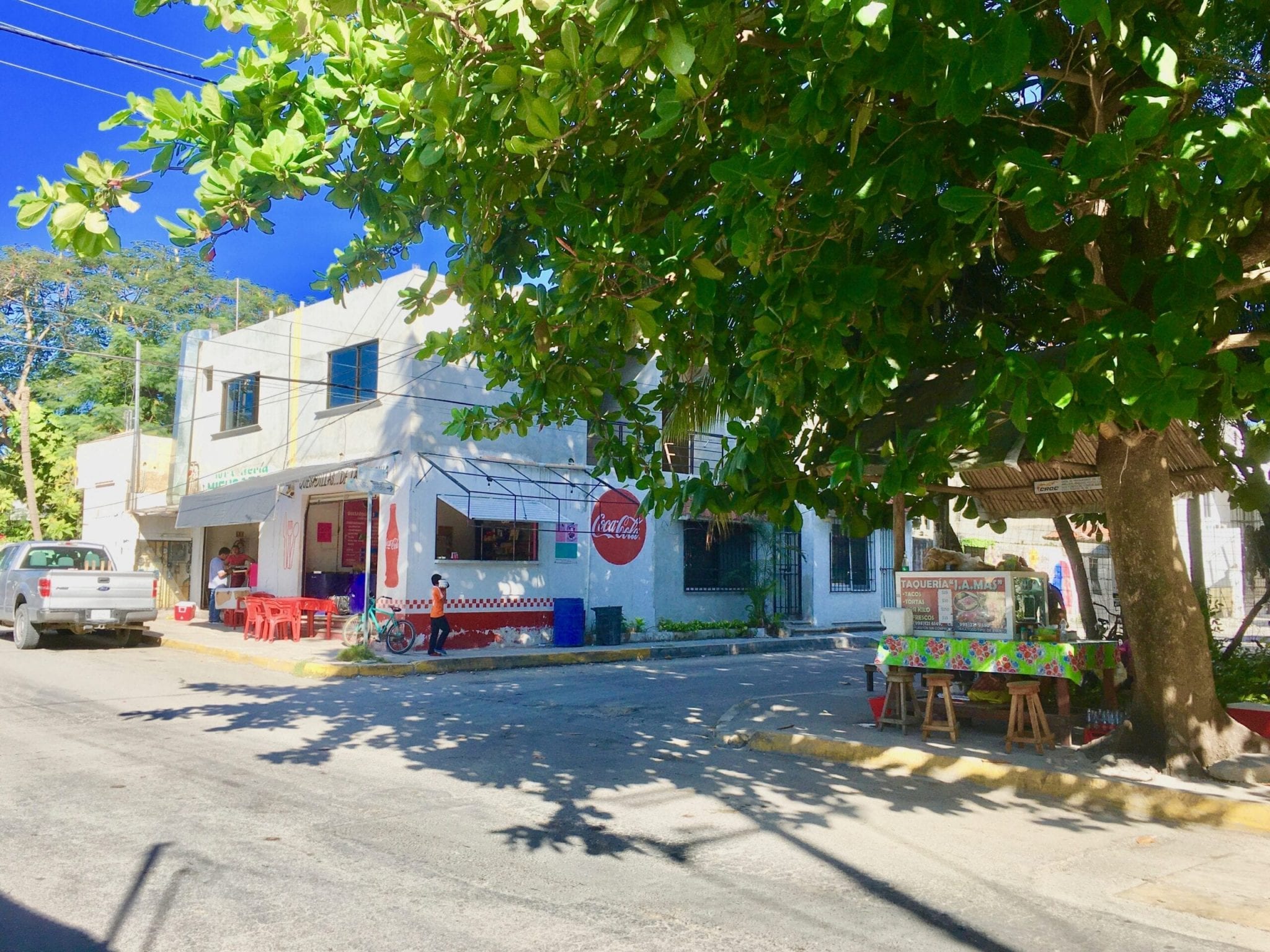
I’ve thoroughly enjoyed your three blogs about Puerto Morelos and can only hope that it retains some of its original charm for a good while to come.
Thanks for the thoughtfulness and thoroughness of your information!
Marjie,
I know you understood my pang of sadness that this beautiful old town may be reaching the end of the road in its present form. Thank you always for the kind and encouraging words on reading the blog.
Phyl.